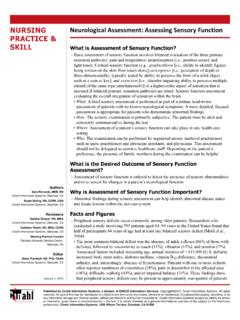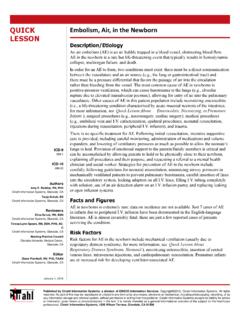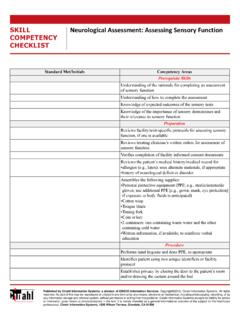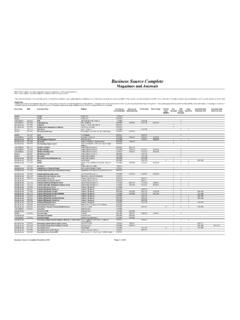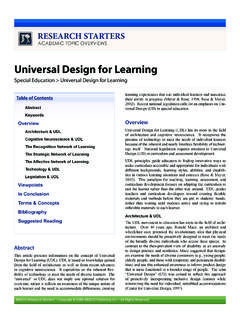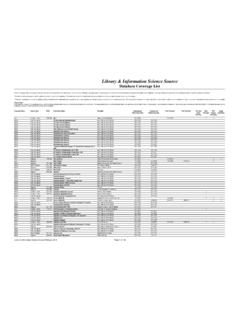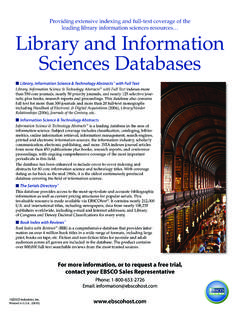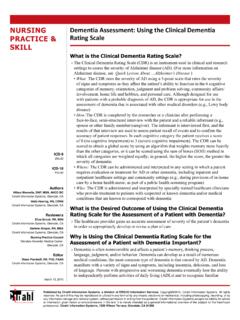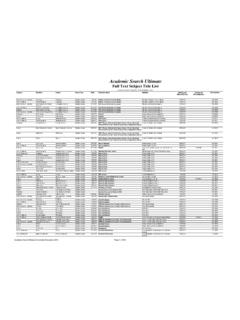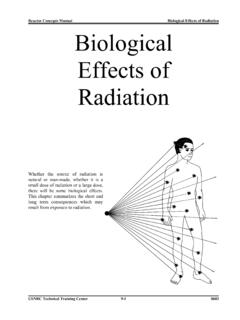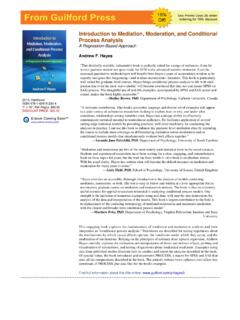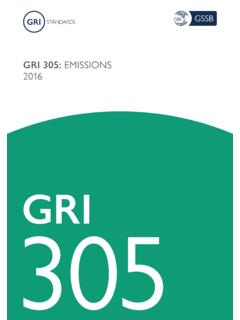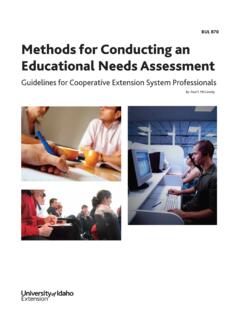Transcription of PRACTICE & NURSING Blood Pressure Reading , Indirect ...
1 NURSINGPRACTICE &SKILLA uthorsEliza Schub, RN, BSNC inahl Information Systems, Glendale, CACarita Caple, RN, BSN, MSHSC inahl Information Systems, Glendale, CAReviewersLee Allen, RN, MSGlendale Adventist Medical Center,Glendale, CANursing PRACTICE CouncilGlendale Adventist Medical Center,Glendale, CAEditorDiane Pravikoff, RN, PhD, FAANC inahl Information Systems, Glendale, CANovember 6, 2015 Published by Cinahl Information Systems, a division of EBSCO Information Services. Copyright 2015, Cinahl Information Systems. All rightsreserved. No part of this may be reproduced or utilized in any form or by any means, electronic or mechanical, including photocopying, recording, or byany information storage and retrieval system, without permission in writing from the publisher. Cinahl Information Systems accepts no liability for adviceor information given herein or errors/omissions in the text.
2 It is merely intended as a general informational overview of the subject for the healthcareprofessional. Cinahl Information Systems, 1509 Wilson Terrace, Glendale, CA 91206 Blood Pressure Reading , Indirect : Taking Adult PatientWhat is Taking an Indirect Blood Pressure Reading in anAdult? Blood Pressure (BP) measurements reflect the Pressure exerted by circulating Blood uponthe walls of Blood vessels. BP results from two forces: the Pressure created by the heartas it contracts to pump Blood into the arteries and through the circulatory system and theforce of the arteries as the vessel walls resist the pumping Pressure of the heart. IndirectBP readings can be taken using either a manual sphygmomanometer (Figure 1) ( ,manual mercury or aneroid [non-fluid based]) or an automated BP device (Figure 2) .This NURSING PRACTICE & Skill focuses on the skills needed to accurately perform indirectBP measurement in an adult using both the automated method and manual methodsFigure 1: Manual 2014, EBSCO Information 2: An automated BP device.
3 Copyright 2014, EBSCO Information Services. What: BP is measured in millimeters of mercury (mmHg) in the United States, and by the International System of Units(SI) in most countries outside the BP readings are comprised of two numbers, the systolic BP (SBP; , the force ofthe heart contracting during systole) and the diastolic BP (DPB; , the Pressure of the heart as it relaxes between beats[diastole]), which is a function of Blood volume and the size, elasticity, and resistance of the body s Blood vessels againstthe heart s contractions How: The inflatable cuff of the sphygmomanometer is placed around a limb to occlude an artery (typically the brachialartery of the upper arm) and is inflated to a Pressure that prevents the flow of Blood through the brachial artery Figure 3. As the cuff is slowly deflated, a stethoscope placed over the brachial artery is used to auscultate the rhythmic tapping ofKorotkoff sounds ( , the tapping sounds made by the Blood flowing through the arteries during compression of the cuffof the sphygmomanometer).
4 Both manual methods of taking Indirect BP measurement require the clinician to know howto determine the appropriate size BP cuff to use and how to properly place the cuff on the patient s brachial artery unless adifferent position is preferred. The manual method requires knowledge of the appropriate Pressure to inflate the cuff beforereleasing the Pressure to auscultate for Korotkoffsounds (For more information see, What You Need to Know Before Takingan Indirect Blood Pressure Reading in an Adult, below)Figure 3: Position the cuff over the upper arm and the stethoscope just abovethe antecubital fossa. Copyright 2014, EBSCO Information Services. Where: BP is measured in all areas where patient care is rendered Who: Depending on facility protocol, licensed and unlicensed clinicians with specialized training are permitted to performmanual Indirect BP measurement.
5 Although automated Indirect BP measurement requires minimal training, it is importantfor the clinician to recognize the automated Indirect measurement is not always accurate and the initial measurement shouldbe compared to manual Indirect measurement. A significant drawback to the use of automated BP machines is that readingscan be inaccurate for patients with an irregular heart rhythm (Howlin et al., 2010)What is the Desired Outcome of Taking an Indirect Blood Pressure Reading in anAdult? BP measurement is performed to establish a baseline BP for use as reference when interpreting future BP measurements Assess for hypertension, defined as SBP 140 mmHg, and/or diastolic BP 90 mmHg and monitor the effect ofantihypertensive medication Assess for hypotension, which could be the result of various conditions ( , dehydration, hemorrhage, infection,neurogenic injury, and the effects of medications) assist in determining the appropriate level of physical activity.
6 Measuring BP during exercise is useful in evaluating thestress placed on the heart during exertion and can be a valuable gauge in establishing an effective exercise programWhy is Taking an Indirect Blood Pressure Reading in an Adult Important? BP is one of the four cardinal vital signs of health ( , the measures of physiological status that assess the body s basicfunctions [ , BP, body temperature, heart rate, respiratory rate]). Monitoring BP is an effective way of evaluating the stresson the cardiovascular system; which has a global impact on the body Untreated hypotension can cause dizziness, fainting, organ damage, and eventually death Signs and symptoms of a hypertensive crisis that can be life-threatening can include severe chest pain severe headache, especially if accompanied by confusion and blurred vision nausea and vomiting severe anxiety shortness of breath seizures unresponsiveness Compared to direct BP measurement, which requires a transducer-based arterial catheter and monitoring equipment), indirectBP measurement is portable, less complicated and costly, and requires relatively limited instructionFacts and Figures In September 2015, the National Heart, Lung, and Blood Institute (NHLBI) announced significant conclusions froma landmark study (Systolic Blood Pressure Intervention Trial.
7 SPRINT) that suggested intensive BP managementsignificantly reduced rates of cardiovascular disease and lowered the risk of death among patients 50 years old withhypertension who are at increased risk for heart disease or those with kidney disease. The NHLBI suggested the SBP targetof < 120 mmHg replace the existing target of < 140 mmHg (NHLBI et al., 2015) In December 2013, the Eighth Report of the Joint National Committee on Prevention, Detection, Evaluation, and Treatmentof High Blood Pressure (JNC 8) published updated recommendations on the treatment of hypertension, which include thefollowing key changes (James et al., 2013): Less aggressive BP targets Less aggressive thresholds for treatment-initiation for older adults and for individuals < 60 years of age with diabetes andkidney disease Elimination of the recommendation to use thiazide-type diuretics only as the initial therapy in most patients.
8 Instead, fornon-Blackhypertensive patients, the recommendation is to begin treatment with one of the following: thiazide-type diuretic,calcium channel blocker, angiotensin converting enzyme inhibitor, or angiotensin receptor blocker. For Black patients, therecommendation is to initiate treatment with either a thiazide-type diuretic or calcium channel blocker In the United States, BP definitions for individuals over age 18 are as follows (Chobanian et al., 2003; Note: These valuesare standard parameters for BP assessment and are measured in mmHg. The first number represents SBP. The secondnumber, preceded by a forward slash, represents DBP): Hypotension: 90/60 or less Normal: More than 90/60 and less than 120/80 Prehypertension: More than 120/80 and less than 140/90 Stage 1 hypertension: More than 140/90 and less than 160/100 The Centers for Disease and Control and Prevention (CDC) includes a classification for uncontrolled BP: an average SBP140 mmHg or an average DBP 90 mmHg (CDC, 2012) Stage 2 hypertension: 160/100 and less than 180/102 Hypertensive crisis, also called hypertensive emergency, formerly called malignant hypertension: SBP 180 or DBP > 120mmHg An estimated 20% of adults worldwide have hypertension.
9 In many countries, half of adults over 60 years of age arehypertensive(Madhur et al., 2014) Ambulatory BP monitoring (ABPM; , measurement of BP at regular intervals over a 24-hour period by a small deviceworn by the patient)is less likely to produce falsely elevated results due to white coat syndrome ( , hypertension causedby anxiety while in the physician s office)and is more effective for assessing for hypertensive episodes because, ratherthan using a single BP recording, BP measurements are averaged over a 24-hour period. In addition, ABPM can uncover masked hypertension ( , normal BP readings in the clinician s office and elevated out-of-office BP). ABPM is superiorto home BP monitoring, because the latter involves periodic patient self-monitoring only and usually does not includenocturnal measurements (Perry, 2013) Although not as effective as ABPM, home BP monitoring does have advantages.
10 Investigators in a cluster randomizedcontrolled study of 450 patients with uncontrolled BP reported that, at 6 months, BP control was achieved in 57% ofparticipants who underwent home BP monitoring in combination with pharmacist case management, compared to only30% of participants who received the usual care. At 18 months, BP control was achieved in 71% and 57% of participants,respectively. Improvements in BP control achieved through home BP monitoring and pharmacist case managementpersisted during 6 months of postintervention follow-up (Margolis et al., 2013) Authors who conducted a recent systematic review reported that patient self-monitoring of BP is associated with reduction in SBP and a reduction in DBP (Glynn et al., 2010) Programs designed to educate patients with hypertension to self-monitor BP can improve BP control by teaching patientshow to use home BP monitors properly, how to correctly position the BP cuff over the brachial artery, and the importance ofnot relying on a single Reading but using an average of at least two BP measurements taken at least one minute apart (Fung etal.)
